Rwanda is a small land-locked country that has steadily become one of the most preferred tourism destinations in Africa. The country stands out because of beautiful hills/valleys, towering mountains, lakes, rivers and wildlife – especially mountain gorillas. One important fact about Rwanda is that the people are generally tall and beautiful. After the devastating Rwanda genocide of 1994, the new government launched a reconciliation and modernization program. Part of the modernization program included revamping the tourism sector and aggressively marketing it to the world.
The government has used many ways to promote tourism. One way is by partnering with famous sports clubs such as Arsenal and ensuing that Tourists who come to the country are given special treatment. Whenever an opportunity presents itself, Rwanda attempts to communicate the country’s Vision for the future. They make sure that this vision for the future is known by famous visitors to the county. It is how structures like the Ellen DeGeneres Campus of the Dian Fossey Gorilla Fund came to be and why Rwanda has been chosen to host many leading international conferences.
Why you should Visit Cultural Sites in Rwanda
If you are planning to go on a Rwanda safari to explore the natural beauty, we recommend that also include some cultural trips in your travel itinerary so that you get to experience how the local people go about with their life. Cultural experiences offer opportunities to learn a lot about why people live the way they do. Visiting the cultural centers in Rwanda will enable you to get back in time and learn about the 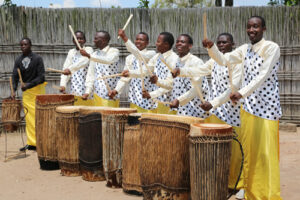 cultural and political history of the country. You will get to know why things are organized the way they before making any personal judgements. As noted earlier, Rwanda went through a major genocide in 1994 and that had a profound influence on the population. Many of the cultural sites and experiences may be linked to the tragic events of 1994.
cultural and political history of the country. You will get to know why things are organized the way they before making any personal judgements. As noted earlier, Rwanda went through a major genocide in 1994 and that had a profound influence on the population. Many of the cultural sites and experiences may be linked to the tragic events of 1994.
While on a cultural experience in Rwanda, you may be requested to participate in some activities that were considered a way of life for the local people. These activities include learning how to hunt wild game, gathering wild edible fruits, preparing traditional meals, participating in traditional music and dance performances among other important activities. Before we go into the cultural sites in Rwanda, you might want to read a similar article about the cultural attractions in Rwanda or general things to do in Rwanda. If you only interested in wildlife, you might want to read more about the national parks in Rwanda.
Cultural Centres in Rwanda
Kitabi Cultural Centre: This amazing cultural center is located in Nyungwe forest national park. This park is famous for chimpanzee trekking activities, birding, nature and canopy walks among other 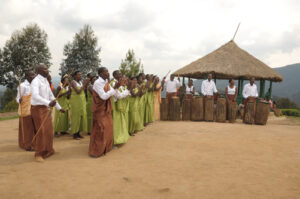 activities. The Kitabi cultural village is located at the entrance of the park. It is a significant site because it used to be one of the palaces of the last king of Rwanda. While at the Kitabi cultural center, visitors get to view a number of traditional huts which are guarded by smartly dressed royal guards. Tourists also get to meet the women who are involved in art and craft work. These women make beautiful art pieces including baskets, mats, beads and other items that they sell to visitors. The women are also happy to teach their visitors how to weave beautiful crafts.
activities. The Kitabi cultural village is located at the entrance of the park. It is a significant site because it used to be one of the palaces of the last king of Rwanda. While at the Kitabi cultural center, visitors get to view a number of traditional huts which are guarded by smartly dressed royal guards. Tourists also get to meet the women who are involved in art and craft work. These women make beautiful art pieces including baskets, mats, beads and other items that they sell to visitors. The women are also happy to teach their visitors how to weave beautiful crafts.
The Kigali Genocide Memorial Museum: This is one of the several genocide memorial sites that were set up by the government to remember the many lives that were lost in the 1994 genocide. Three 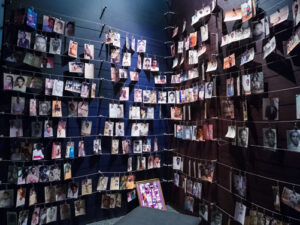 months of horrific killing resulted into death of over 700,000 people. While at the museum, you will be taken to three sections. The first site was built to remember the children who were killed, the second section is dedicated to adults who died while the third section was built to remember all genocides that took place in other parts of the world. While at the Kigali genocide memorial museum, you will hear sad stories of what happened during the genocide. Everyone is encouraged to visit this center because it reminds humanity about the importance of peace while ensuring that hate is contained by leaders before escalation. The Centre is a constant reminder of what happened to the citizens of Rwanda. The lesson is never to forget or allow it ever happen again. You can visit this genocide memorial as part of our 1 Day Kigali City Tour.
months of horrific killing resulted into death of over 700,000 people. While at the museum, you will be taken to three sections. The first site was built to remember the children who were killed, the second section is dedicated to adults who died while the third section was built to remember all genocides that took place in other parts of the world. While at the Kigali genocide memorial museum, you will hear sad stories of what happened during the genocide. Everyone is encouraged to visit this center because it reminds humanity about the importance of peace while ensuring that hate is contained by leaders before escalation. The Centre is a constant reminder of what happened to the citizens of Rwanda. The lesson is never to forget or allow it ever happen again. You can visit this genocide memorial as part of our 1 Day Kigali City Tour.
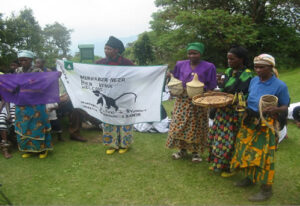 The Banda Cultural Village: This site is also a popular stop-over point for Travelers registered for chimpanzee trekking in Nyungwe national park and other activities. It is easy to get to the site because it is built next to the park headquarters. On arrival at the village, Tourists are usually welcomed by a group of Intore traditional dancers after which the resident Guide takes them around. Visitors can check out how the local herbalists prepare medicine to cure common ailment or watch the local women make beautiful art pieces. The women can also demonstrate how to grind maize and prepare a meal from it. There is a lot more to do at the site and the scenery is beautiful.
The Banda Cultural Village: This site is also a popular stop-over point for Travelers registered for chimpanzee trekking in Nyungwe national park and other activities. It is easy to get to the site because it is built next to the park headquarters. On arrival at the village, Tourists are usually welcomed by a group of Intore traditional dancers after which the resident Guide takes them around. Visitors can check out how the local herbalists prepare medicine to cure common ailment or watch the local women make beautiful art pieces. The women can also demonstrate how to grind maize and prepare a meal from it. There is a lot more to do at the site and the scenery is beautiful.
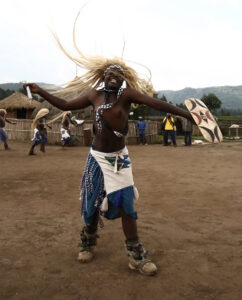 The Ibyiwacu Cultural Village: Also known as the gorilla Guardians village, this cultural site is located in Musanze district and Kinigi to be specific. The Village is found adjacent to the famous Volcanoes National park which is home to Rwanda’s mountain gorillas. It was founded by former poachers. While at the Gorilla Guardians Village, you will find the Batwa Pygmies who were the original inhabitants of the forests found in the wider Virunga ranges. They lived as hunters of wild game and gatherers of wild edible fruits. The Batwa pygmies now live in the outskirts of the forests and have resorted to new income generating activities like making clay pots and selling them to visitors who visit the volcanoes national park. While at the Ibyiwacu cultural village, you will watch several cultural presentations including traditional music and dance performances. You will also be requested to join in the preparation or traditional meals and learning hunting skills.
The Ibyiwacu Cultural Village: Also known as the gorilla Guardians village, this cultural site is located in Musanze district and Kinigi to be specific. The Village is found adjacent to the famous Volcanoes National park which is home to Rwanda’s mountain gorillas. It was founded by former poachers. While at the Gorilla Guardians Village, you will find the Batwa Pygmies who were the original inhabitants of the forests found in the wider Virunga ranges. They lived as hunters of wild game and gatherers of wild edible fruits. The Batwa pygmies now live in the outskirts of the forests and have resorted to new income generating activities like making clay pots and selling them to visitors who visit the volcanoes national park. While at the Ibyiwacu cultural village, you will watch several cultural presentations including traditional music and dance performances. You will also be requested to join in the preparation or traditional meals and learning hunting skills.
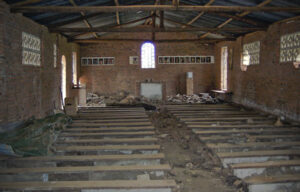 The Ntarama Genocide Memorial Museum: This is one of the genocide memorial sites that were built by the government of Rwanda to enable the young generation know about the history of their country. Over 5,000 people were killed and buried outside the church in a mass grave. Visitors to the Ntarama memorial site should expect to view the remains of some of the victims and their personal belongings (clothes) which were preserved to remind everyone of the sad events of 1994 were over 800,000 Rwandans lost their lives in brutal ways.
The Ntarama Genocide Memorial Museum: This is one of the genocide memorial sites that were built by the government of Rwanda to enable the young generation know about the history of their country. Over 5,000 people were killed and buried outside the church in a mass grave. Visitors to the Ntarama memorial site should expect to view the remains of some of the victims and their personal belongings (clothes) which were preserved to remind everyone of the sad events of 1994 were over 800,000 Rwandans lost their lives in brutal ways.
The Bugesera Reconciliation Village: Immediately after the deadly April 1994 genocide of Rwanda, there was still a lot of resentment and hatred between the Hutu and Tutsi tribes of Rwanda. People could 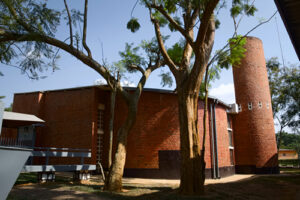 not easily forgive or see eye to eye. This is because Rwanda is a small country and the killers lived next to the victims. It was very difficult to forget that their own neighbor had participated in killing their entire family. This tension prompted the new government to come up with workable solutions to help bring reconciliation among the people. The Bugesera reconciliation village was set up were people with unresolved disputes and grudges would go and try to find ways of reconciling with each other. To this day, people still visit the site to resolve their individual grudges.
not easily forgive or see eye to eye. This is because Rwanda is a small country and the killers lived next to the victims. It was very difficult to forget that their own neighbor had participated in killing their entire family. This tension prompted the new government to come up with workable solutions to help bring reconciliation among the people. The Bugesera reconciliation village was set up were people with unresolved disputes and grudges would go and try to find ways of reconciling with each other. To this day, people still visit the site to resolve their individual grudges.
The Presidential Palace Museum: This is also one of the most important cultural centers in Rwanda. Located just 2km away from the city of Kigali, this site was the former State House of 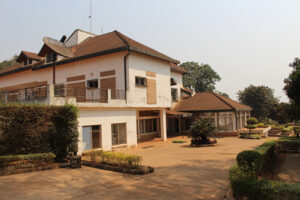 Rwanda’s late president Juvel Habyarimana. Habyarima was killed after his plane (A Falcon 50) was shot down on the 6th of April 1994. His sudden death is what sparked off the Rwanda genocide which claimed over 800,000 lives in the hands of the Hutu extremists. The former state house is a major tourism site where visitors can go to learn more about the former president and view some of the debris from the Falcon 50 plane which crushed just within the compound of the presidential palace. Tourists also get the opportunity to tour around the building and see the secret rooms and the night club of the late president.
Rwanda’s late president Juvel Habyarimana. Habyarima was killed after his plane (A Falcon 50) was shot down on the 6th of April 1994. His sudden death is what sparked off the Rwanda genocide which claimed over 800,000 lives in the hands of the Hutu extremists. The former state house is a major tourism site where visitors can go to learn more about the former president and view some of the debris from the Falcon 50 plane which crushed just within the compound of the presidential palace. Tourists also get the opportunity to tour around the building and see the secret rooms and the night club of the late president.
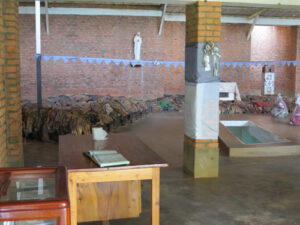 The Nyamata Genocide memorial: This was a former Catholic Church where refugees had decided to converge while hoping that the killers would have compassion for them and spare their lives. It turns out that the Hutu extremists knew nothing about mercy even for innocent people seeking safety inside a church. They shut the doors to the church with the refugees inside and threw grenades through the windows leading to the death of about 10,000 people. On your visit to the site, you will see the mass graves where the victims were buried. Blood stained clothes and bullet holes can still be seen within the church building.
The Nyamata Genocide memorial: This was a former Catholic Church where refugees had decided to converge while hoping that the killers would have compassion for them and spare their lives. It turns out that the Hutu extremists knew nothing about mercy even for innocent people seeking safety inside a church. They shut the doors to the church with the refugees inside and threw grenades through the windows leading to the death of about 10,000 people. On your visit to the site, you will see the mass graves where the victims were buried. Blood stained clothes and bullet holes can still be seen within the church building.
The National History Museum: Formerly known as the Kandt House Museum, this is an important tourist attraction in Kigali whose history dates back to the German colonial period. The Kandt house was the very 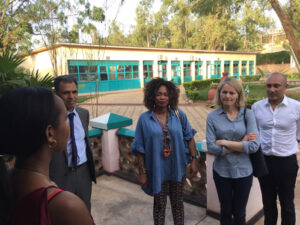 first modern building in Rwanda and was initially named after the first German governor of Rwanda known as Dr. Richard Kandt. When you visit the museum, you will see rare photographs of Rwanda and German’s perspective of World War 1. Vital information about vegetation, geological features and the wildlife in the country are available at the Museum. The site is divided into three sections. The first section showcases life in Rwanda before the colonial rule while the second section shows what it was like during the German Colonial era. The third section showcases life in Rwanda after gaining independence.
first modern building in Rwanda and was initially named after the first German governor of Rwanda known as Dr. Richard Kandt. When you visit the museum, you will see rare photographs of Rwanda and German’s perspective of World War 1. Vital information about vegetation, geological features and the wildlife in the country are available at the Museum. The site is divided into three sections. The first section showcases life in Rwanda before the colonial rule while the second section shows what it was like during the German Colonial era. The third section showcases life in Rwanda after gaining independence.
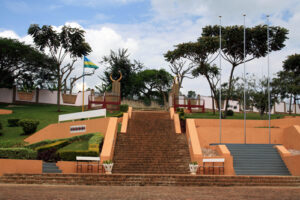 The Ethnographic Museum: This is a special cultural site because it was gifted to the people of Rwanda by the Belgian government to mark 25 years of Independence in 1987. Located in the city of Huye, the museum showcases many cultural aspects of Rwanda including traditional farming and hunting tools. The Museum also displays traditional music instruments, local poetry and beautiful ethnographic collections from Africa. The Ethnographic Museum offers Travelers an opportunity to learn a lot about Rwandan culture, traditions and history.
The Ethnographic Museum: This is a special cultural site because it was gifted to the people of Rwanda by the Belgian government to mark 25 years of Independence in 1987. Located in the city of Huye, the museum showcases many cultural aspects of Rwanda including traditional farming and hunting tools. The Museum also displays traditional music instruments, local poetry and beautiful ethnographic collections from Africa. The Ethnographic Museum offers Travelers an opportunity to learn a lot about Rwandan culture, traditions and history.
Nyanza Genocide Memorial: This was a major killing ground during the 1994 genocide resulting in the loss of over 10,000 lives. Among the victims of the killings at Nyanza was the famous queen Rosalie Gicanda of 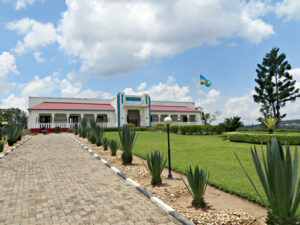 Rwanda. She was brutally killed together with her royal attendants. The queen was buried at the royal palace while the other victims were buried in a mass grave. The Nyanza genocide memorial is often chosen to host the annual genocide memorial commemoration ceremonies.
Rwanda. She was brutally killed together with her royal attendants. The queen was buried at the royal palace while the other victims were buried in a mass grave. The Nyanza genocide memorial is often chosen to host the annual genocide memorial commemoration ceremonies.
The Muramba Genocide Memorial: This particular site is not often visited like the other genocide memorial sites because of its remote location in the south western part of the country. The Muramba site was a former technical school where over 50,000 people were killed by the Hutu extremists known as Interahamwe. This site is excellent for those who want to study more about the Rwanda genocide which humbled the world in 1994.
The Ryamurari Archaeological site: This was the capital of the Ancient Ndorwa kingdom before it became part of Rwanda. The site is located in Nyagatare district and has become a significant archaeological site where several ancient items, regalia, artifacts and totems were discovered. Archeologists discovered cow bones, grinding stones and items of cultural/historical significance. These discoveries confirmed that the earlier inhabitants of the area were both crop farmers and cattle keepers. A visit to the site offers Travelers the opportunity to view the archaeological items discovered by the Archeologists.
The King’s Palace in Nyanza: Before being colonized, Rwanda had one cultural leader/King who lived in a traditional palace found in Nyanza. 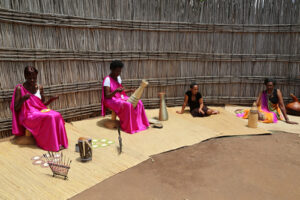 In 1931, the Belgium colonial government built a modern palace for the king Mutara III of Rwanda. The king who succeeded Mutara III had to deal with many challenges that forced him to go into exile leaving behind his palace. In later years, the government of Rwanda decided to abolish the ancient kingdom and thus converted the Nyanza palace into a cultural center. The palace was revamped but was looted during the 1994 genocide. Another revamping project occurred more recently and the end result is one of the best cultural sites in Rwanda.
In 1931, the Belgium colonial government built a modern palace for the king Mutara III of Rwanda. The king who succeeded Mutara III had to deal with many challenges that forced him to go into exile leaving behind his palace. In later years, the government of Rwanda decided to abolish the ancient kingdom and thus converted the Nyanza palace into a cultural center. The palace was revamped but was looted during the 1994 genocide. Another revamping project occurred more recently and the end result is one of the best cultural sites in Rwanda.
Utubindi twa Rubona: This is one of the important archaeological sites in Rwanda. This particular one is located in Gatsibo District in Tubindi village. While at Utubindi twa Rubona, Visitors can see clay pots that are believed to have been used by the King Ruganzu II. Ruganzu is arguably the most revered King of Rwanda. He was a great worrier and is believed to have had the power to perform miracles. It is said that the King used the pots to draw water for his men while on a journey to do battle. King Ruganzu’s remains are found at the site.
